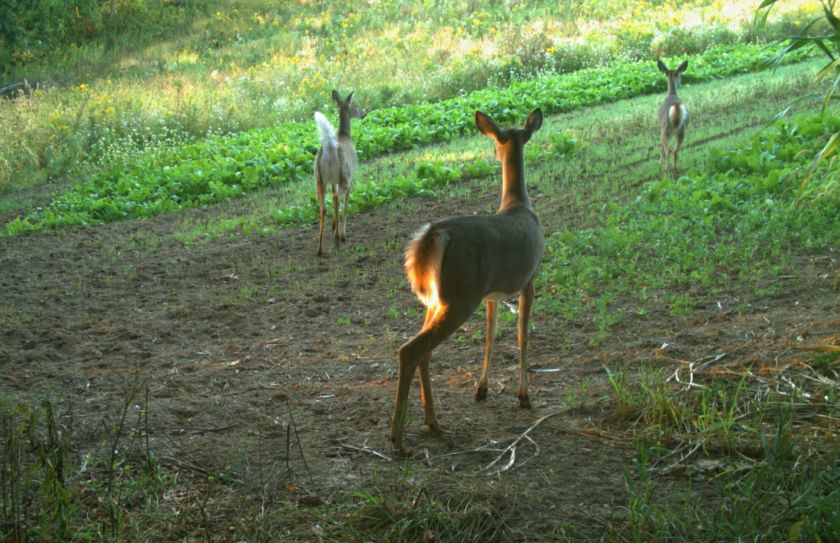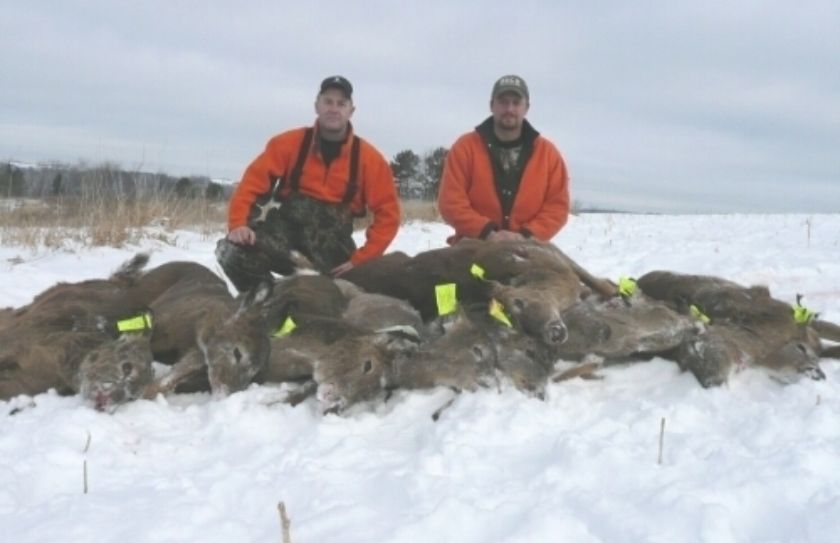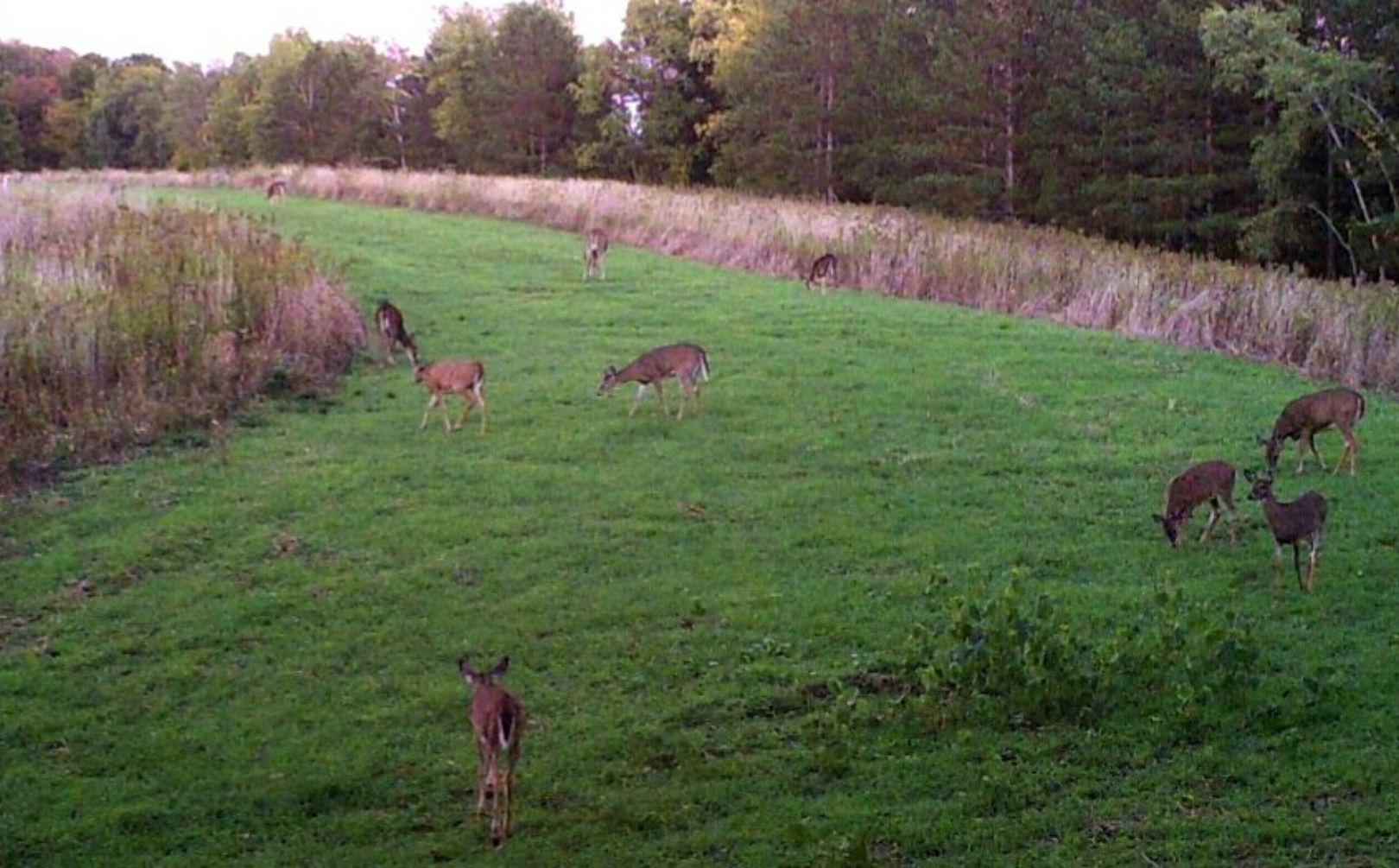
There is most likely no greater indication that your herd, hunting and habitat efforts are running smoothly, than if you experience easy doe hunting opportunities. The antlerless portion of the deer population are incredibly rigid within their daily movements. I personally believe that doe family groups both crave and find comfort within that system of rigidity, no different than our own children. The highly defined daily patterns of doe family groups, can be easily taken advantage of when you create and allow their movements to continue for the entire hunting season. If that old doe offers an incredibly tough hunt, than it could be an indication that changes in your hunting style or habitat plan are in order. How easy is the doe hunting, on your land?
Doe Family Groups Offer Reliable Movements
For the bulk of the year, does like to do the same thing, every single day. They also like to live within a very small home range when compared to bucks, which sets them up for extremely predictable daily travel patterns. Here are a few of the behavior patterns that allow you to carry out your doe hunting efforts with a high level of strategic success.
1. Does will bed within 50-100 yards or less of their preferred high quality evening food source, and will do so for the entire hunting season if the food and habitat conditions remain adequately attractive and secure (free from hunting pressure).
2. You can typically set your watch by when a doe and her fawns, or a particular doe family group, enters an evening food source. Even when spooked, they will simply readjust and become highly patternable within a few days to a week. A doe family group can become so predictable that when they do not appear where and when they are supposed to be, something is wrong! Many times I have experienced the evidence of predatory or even trespassing pressure through either tracks or deer cam pics when antlerless movements become suddenly random.
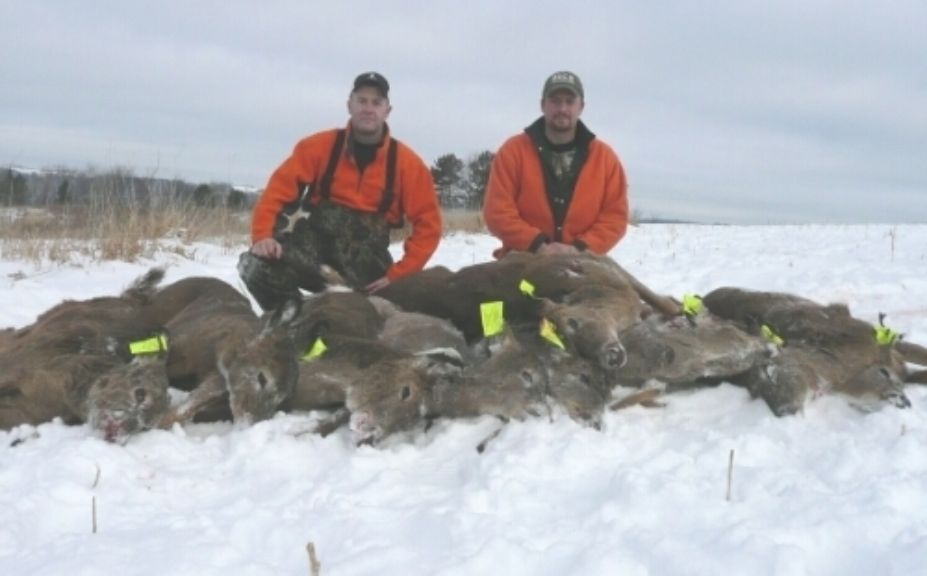
*Doe family groups often have only 3 things on their minds: Food, cover and safety. If you allow them to feel they are safe with repeated daily food and cover movements, they become easy to harvest when desired. To establish consistent, easily huntable patterns of deer use, read "Recognizing Deer Movement Patterns".
3. Doe family groups can tolerate a much higher level of stress than a mature buck; in particular each year that a buck ages. If the conditions are perfect to house a herd of does, then those same conditions will quickly attract those same does again, if they have previously been spooked. When a mature buck is spooked from his "honey hole", he is typically gone for the season.
4. The antlerless portion of the population tends to think and act within a condition of "herd mentality". I have experienced a doe family group's sense of herd mentality on many occasions, but none was more definitive than an experience that I had a dozen years ago when my hunting buddy Karl, witnessed a herd of deer cross a field with a giant buck. I was just inside the woods sitting beside a buck I had already shot and recovered, and within 10 seconds of when Karl watched the herd enter the woodlot, they were literally in my lap! More than 10 deer passed within 5-20 yards with the exception of the lone, mature monster. Where did he go? Who knows, but as soon as he entered the woods he made his own decision, and left the females. As an independent thinker, he was able to pull back and make a wiser decision to take a left and enter his heavy security cover instead of following the rim of the top of the hollow through the mature oaks, with the herd of does. Simply, what 1 doe does, they almost all will certainly follow. Typically it isn't about hunting a doe, but hunting a herd of does, which is much easier task than attempting to narrow down an independent thinker.
*Deer, in particular doe family groups, will offer reliable daily movements from their daytime bedding areas, through their staging area, and into the their evening food source. Check out the staging area video above, to find how you can make sure to keep a staging area from being unpressured.

If you enjoy advanced whitetail strategies, you'll love my Whitetails By Design Book Series!
What Causes Doe Movements to Become Random?
There is not greater reason that hunting antlerless deer becomes difficult, than the level of hunting pressure itself. I need to emphisize this: A mature doe should be able to be predictably harvested, with a bow, at just about any time. An old matriarch is wise, smart and resourceful; but she is also extremely set in her daily ways. Set patterns by any deer can be predictably taken advantage of. If you are having a tough time targeting the antlerless portion of the herd on the lands that you hunt, than that is a sure sign that something is out of place. Hunting pressure will almost always be the "lowest hole in the bucket" when it comes to the majority of herd and habitat management efforts, but there are several other reasons for the lack of predictability in your doe hunting efforts:
1. Random habitat improvements
Food plots on great soil in one location or another, a bedding area on a pretty little interior hardwood knoll, or even a waterhole installed within a natural seepage; but do those improvements relate to each other? If your habitat improvements do not compliment each other, than you will lack definition of deer movement even if they are located in the perfect conditions for that improvement. When you lack defined deer movement patterns, than you will also lack quality hunting opportunities, and that includes your doe hunting efforts. What you will also find is that random movements create random hunter/deer encounters. As the number of hunter and deer encounters increase, the number of your quality hunting opportunities will decrease.
Solution: Always consider, "If deer are attracted here, where are they traveling from and where are they traveling to? The more you can definitively answer that question, the easier it will be to experience successful doe hunts.
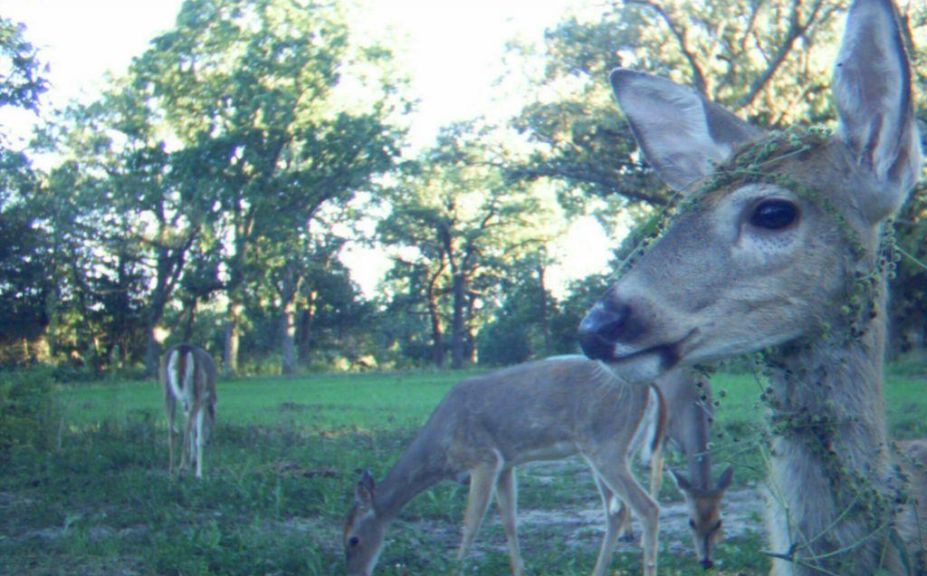
*Try not to underestimate the ability for food sources to offer just as much "risk", as reward. If a deer becomes more aware of your hunting efforts because of a food source that you created, you are better off removing the food source. For more info try reading,"Food Plot Strategies of Risk and Reward"
2. Inconsistent food source patterns
Even if your habitat improvements compliment each other, they will not define movements if there are seasonal holes of food sources within the patterns of improvement that you are attempting to create. The greatest cause of this that I routinely experience across the country, are food plots that are established with different forages in different food plot locations. Doe family groups love consistency. They show that the crave consistency by becoming very lazy and predictable within their daily movements. Something that can destroy the healthy level of consistency, is when does are forced to change their feeding areas to follow a variety of forages that are peaking in nutrition and attraction across a given tract of land. Dominant does displace subordinate doe family groups, and the entire movement on the land can be a chaotic and stressful mess, while doe family groups are forever placed into a position to find their "own" spot in the woods. It can be very hard to predictably hunt doe family groups, when those same doe family groups don't predictably know where they are going to be the next day, either.
Solution: Make sure to establish a consistent variety off food source offerings across your entire parcel. On small parcels I often recommend a combination of leafy plants including brassicas, beans and peas on one 1/2 of a plot, and a blend of cereal grains including winter rye, wheat, oats and even some peas...on the other. On larger parcels with a more extensive food plot network, I often recommend the same green combinations specific to the local needs of the land and herd, as well as the addition of corn along side each and every planting. But regardless of your favorite combination, you should attempt to build a food source system that consistently establishes the efficient use of your entire parcel...and not just the portion of the land that features the most attractive planting at the moment.
3. Poor, hunting season food and cover sources
Simply, you can't hunt what you can't attract, and in the North 1/2 of the country there is no month that is more important than November, with October and December coming in at a close tie for 2nd place. If the food on your land runs out or is much less attractive than a neighboring source, than expect the deer to leave. "Cover is King" some say, but regardless if cover is king or not, no matter how great the castle the kingdom will starve without food.
Solution: Whether you are offering an orchard with varieties designed to drop early or late from the trees, or food plots planted with forages degigned to peak in nutrition and attraction at different points during the hunting season, you need to avoide creating gaps in potential deer focus.
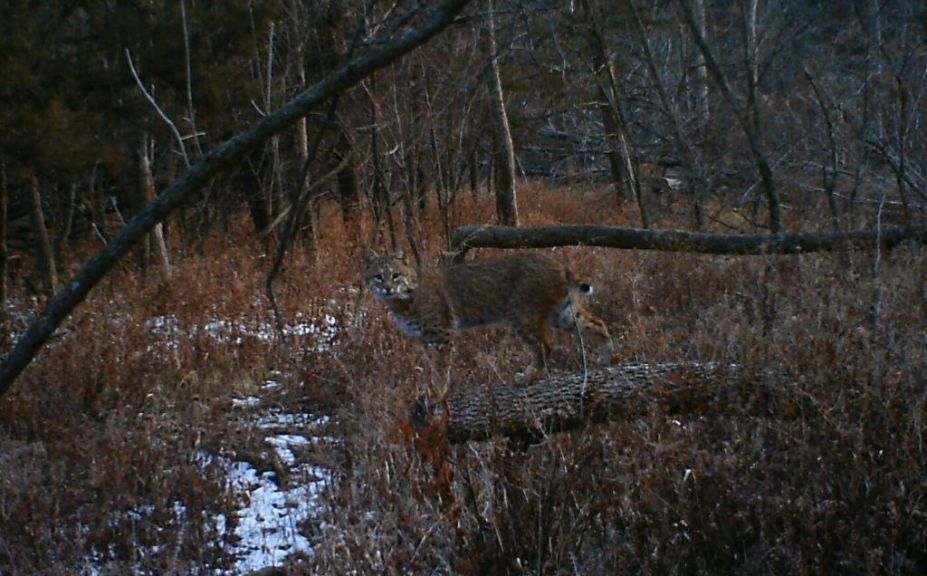
*Hunting styles will play a large role in how successful your hunting efforts will be. For information on how you can become the ultimate predator, try reading Chapter 19 of my 1st book, titled "Predatory Access"
Predatory Doe Hunting Techniques
1. Avoid spooking doe family groups within their preferred evening food sources, as well as their bedding areas.
2. Allow the bedding to staging area to food source to continue until the time you desire to harvest a doe. You can easily lure does into a false sense of security the longer that you allow their bedding to feeding movements to repeat.
3. Focus on evening hunts that allow you to take harvest does on small food sources or waterholes that are directly on the way to larger preferred evening food sources. If the food source that you are hunting is the "dead end" of their daily deer movement...consider hunting somewhere else.
4. During morning hunts, use stand locations that are placed in long transitions areas between preferred evening food sources and bedding areas. Open hardwoods and non-food field travel routes are two examples where non-invasive doe harvest can take place.
5. Late gun seasons may feature the perfect time to accomplish nearly all of your doe harvest goals in 1 day. The picture above, is reflective of a 1 day doe hunt, where 9 does were taken within 6 total hours of hunting, by two hunters.
6. Harvest does early during non-invasive bow hunts, youth hunts or specialty antlerless hunts, and then leave the last 1/2 of October, all of November and the first portion of December to buck hunting.
Predatory doe hunts should be precise, surgical quick hits that offer a very high degree of success on doe family groups that have been lured into a false sense of security by allowing daily bedding and feeding patterns to repeat over and over again.
Conclusion
Doe family groups living within a healthy habitat and hunting climate, tend to feed within their evening food sources between two and 3 hours prior to dark. A sign that your management efforts are working is when you can harvest a particular doe whenever you feel that you need to, often while they are traveling to their evening food sources.
Why would a particular old doe not travel predictably during her daily movements? Predators, trespassers, inconsistent food sources and randomly created habitat improvements can all be blamed, but the amount of hunting pressure that is applied to the land, will ultimately determine how easily you can efficiently target the antlerless deer where you hunt. If that 8 year old matriarch is too hard to hunt, your answer for a potentially successful hunt will most likely will be found by making a change in your overall hunting and/or habitat plan if attack.
